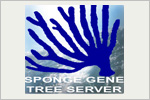Biomineralization
Biomineralization refers to the processes by which organisms form minerals under biological control. Skeletons of multicellular organisms are formed by a process called biologically controlled mineralizationand are often integral and functional parts of the organisms – and skeletal remains are frequently the only tangible evidence of organisms that remain in the fossil record.
The highly (enzymatically) regulated process of biologically controlled mineralization is responsible for the production of materials such as bones, shells, and teeth, some of which show exceptional strength and beauty, often of high commercial value (i.e. pearls). Ongoing research in our lab investigates how organisms form their calcareous skeleton and which genetic mechanisms control mineral deposition. We are also interested in the evolutionary aspects of the diversification of calcareous biomineralization in the animals (Metazoa) as well as assessing the effects of global (climate) change and ocean acidification on calcifying organisms in controlled mesocosm experiments.
Key publications
- Conci, N., Lehmann, M., Vargas, S., Wörheide, G. 2020. Comparative proteomics of octocoral and scleractinian skeletomes and the evolution of coral calcification. Genome Biology and Evolution: evaa162.
- Conci, N., Wörheide, G., Vargas, S., 2019. New non-bilaterian transcriptomes provide novel insights into the evolution of coral skeletomes. Genome Biology and Evolution 11:3068–3081.
- González-Pech, R. A., Vargas, S., Francis, W. R., & Wörheide, G. 2017. Transcriptomic resilience of the Montipora digitata holobiont to low pH. Frontiers in Marine Science 4: 403.
- Jackson, D. J., Mann, K., Häussermann, V., Schilhabel, M. B., Lüter, C., Griesshaber, E., Schmahl, W. & Wörheide, G., 2015. The Magellans venosa Biomineralizing Proteome: A Window into Brachiopod Shell Evolution. Genome Biology and Evolution 7(5): 1349-1362. Open Access.
- Voigt, O., Adamski, M., Sluzek, K., Adamska, M., 2014. Calcareous sponge genomes reveal complex evolution of α-carbonic anhydrases and two key biomineralization enzymes. BMC Evolutionary Biology 14, 230.
- Rahman, M.A., Karl, K., Nonaka, M., Fujimura, H., Shinjo, R., Oomori, T., Wörheide, G., 2014. Characterization of the proteinaceous skeletal organic matrix from the precious coral Corallium konojoi. Proteomics 14(21-22): 2600–2606.
- Jackson, D., Macis, L., Reitner, J., Wörheide, G. 2011. A horizontal gene transfer supported the evolution of an early metazoan biomineralization strategy. BMC Evolutionary Biology 11 (1), 238. (open access)
- Jackson, D.J., Thiel, V., Wörheide, G. 2010. An evolutionary fast-track to biocalcification. Geobiology 8 (3), 191–196.
- Ehrlich, H., Deutzmann, R., Brunner, E., Cappellini, E., Koon, H., Solazzo, C., Yang, Y., Ashford, D., Thomas-Oates, J., Lubeck, M., Baessmann, C., Langrock, T., Hoffmann, R., Wörheide, G., Reitner, J., Simon, P., Tsurkan, M., Ereskovsky, A.V., Kurek, D., Bazhenov, V.V., Hunoldt, S., Mertig, M., Vyalikh, D.V., Molodtsov, S.L., Kummer, K., Worch, H., Smetacek, V., Collins, M.J. 2010. Mineralization of the metre-long biosilica structures of glass sponges is templated on hydroxylated collagen. Nature Chemistry 2 (12), 1084–1088.
- Jackson, D. J., Macis, L., Reitner, J., Degnan, B. M., & Wörheide, G. 2007. Sponge Paleogenomics Reveals an Ancient Role for Carbonic Anhydrase in Skeletogenesis. Science 316(5833): 1893-1895.





